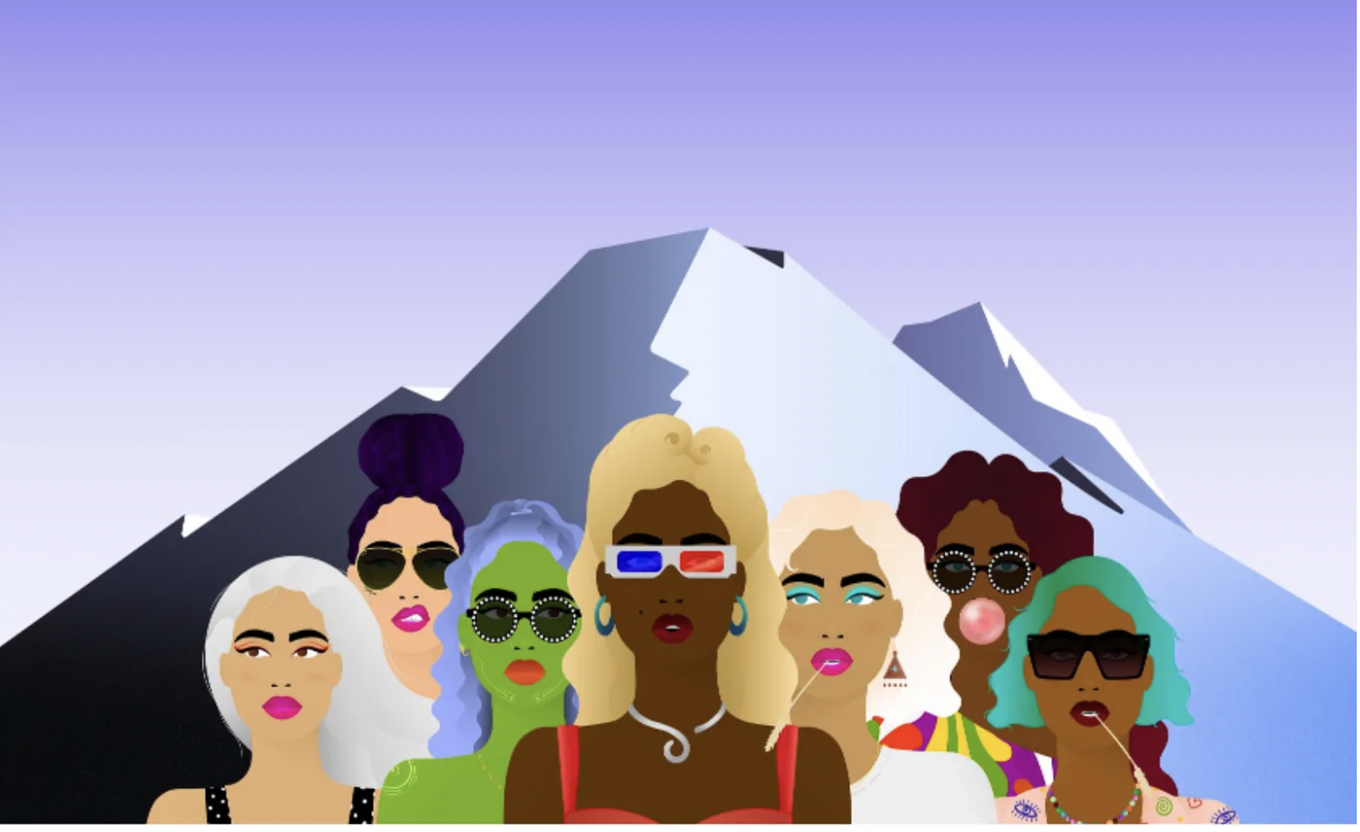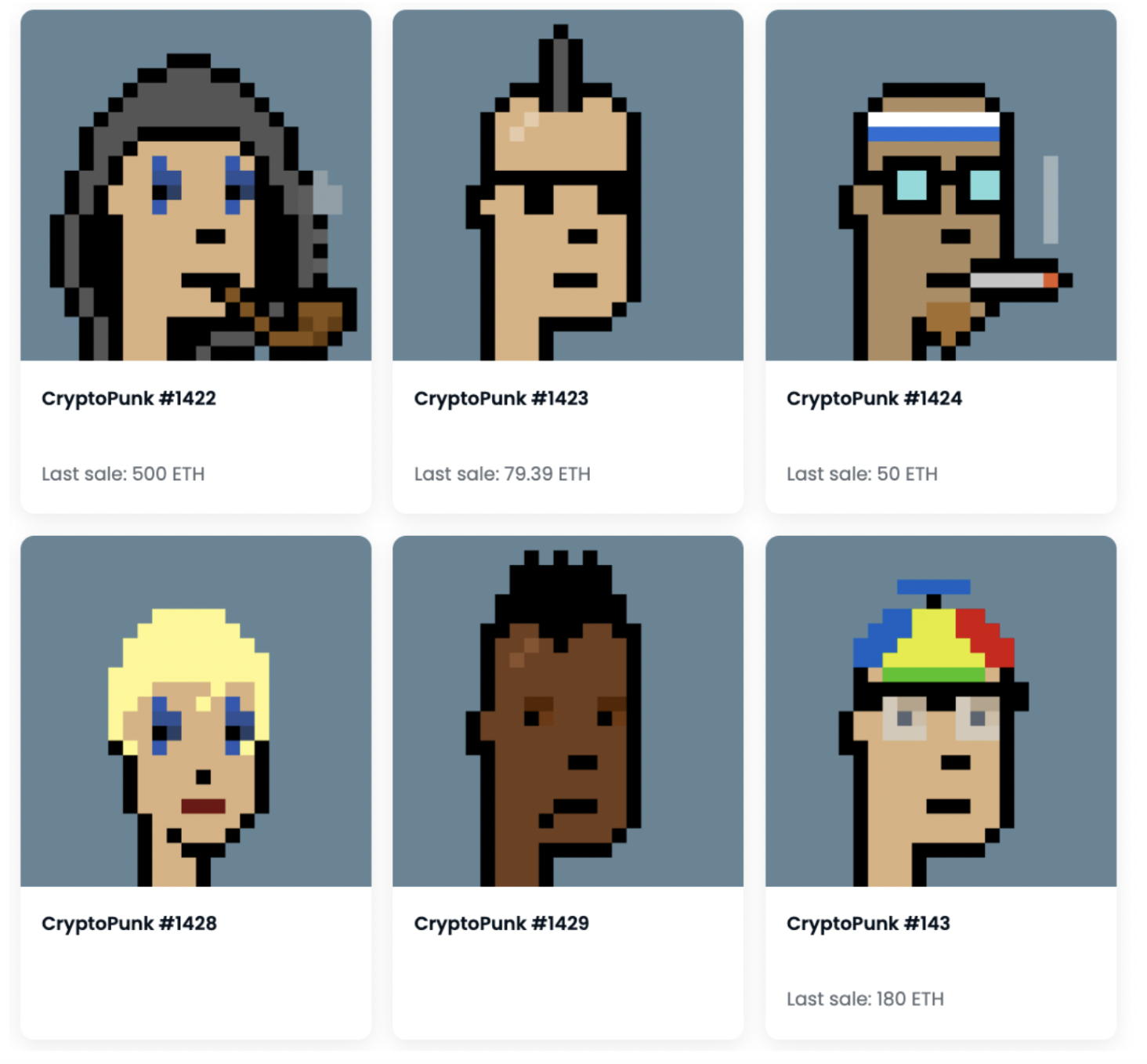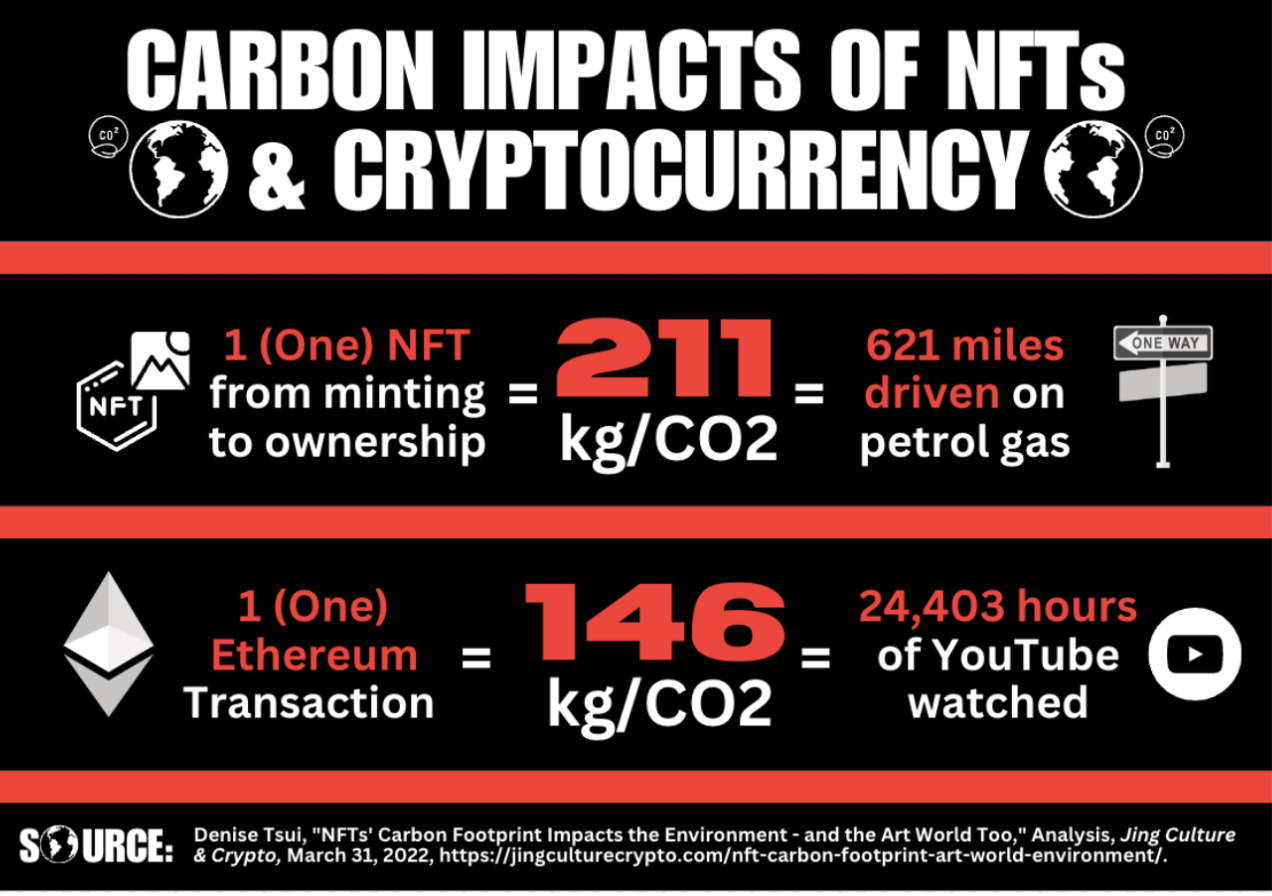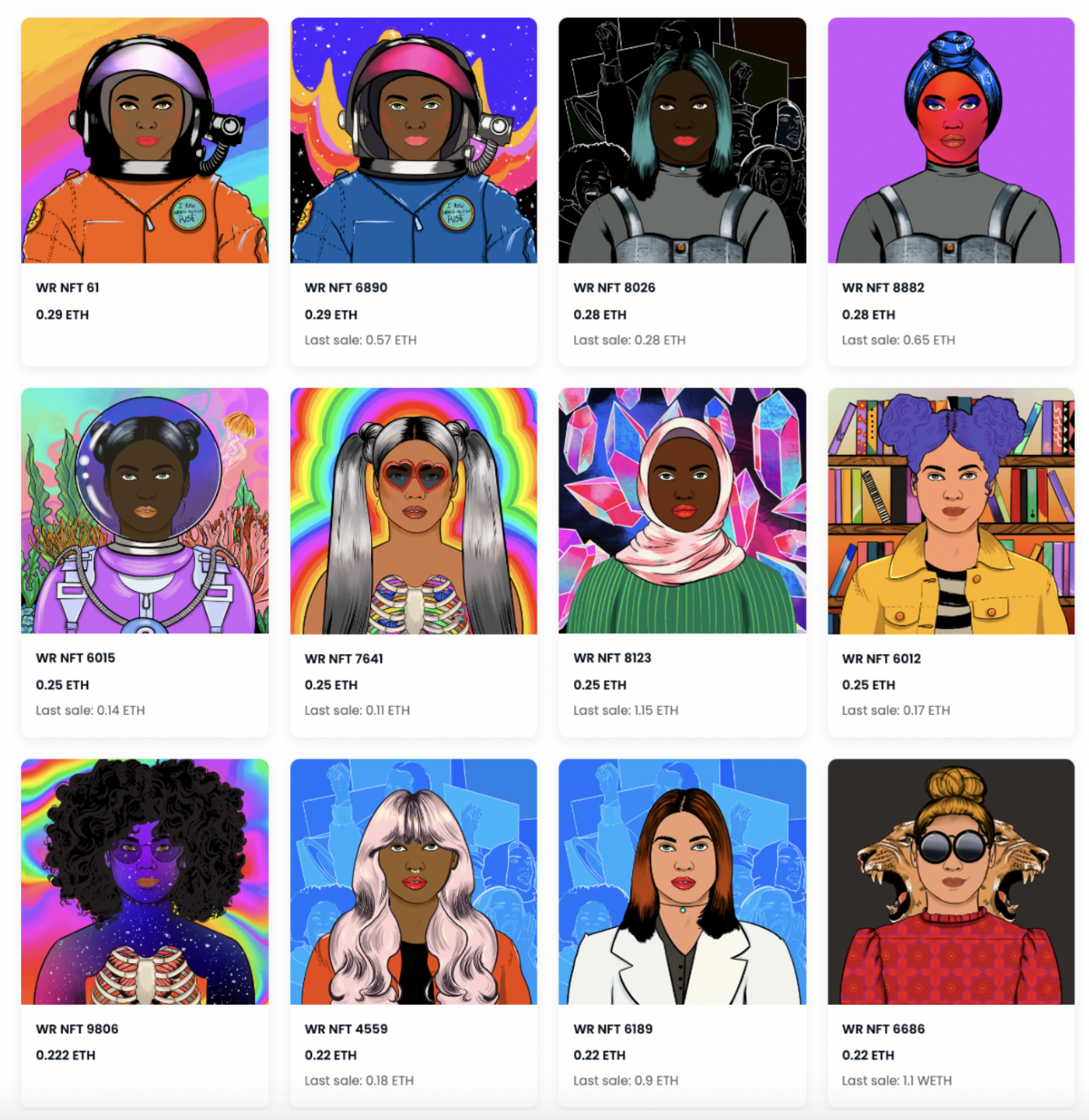Written by Lauren Miller
The development of communities is integral to the continued success and expansion of NFT (non fungible token) networks and marketplaces. Of particular note, the complexities and ever-shifting nature of Web3-enabled technologies and digital spaces offer unique opportunities for otherwise digitally marginalized communities to advocate for themselves and their peers both on and off the blockchain. Yet, inherent roots in capitalist structures draw into question the power and reach of individual placemaking through NFTs and other Web3 spaces. This article covers the current state of community building and barriers to access through NFT marketplaces, ultimately suggesting the relatively unknown future of the ability of marginalized communities to find space and place in this ever-evolving network.
NFTs and Community Building
According to Rolling Stone, “to succeed in the … NFT space is to become part of an interwoven community” in which–much like the scientific properties of mycelium–interconnected networks of artists, artworks, and cryptocurrencies inevitably “form a community in the way tree roots interconnect with each other.” In a Web3 setting, NFT owners and artists uniquely possess a digital vector of tools to build a community explicitly around their curated creator or collector identity. As noted in Harvard Business Review, this sense of community is more multifaceted than that of traditional, physical token ownership: “owning a NFT effectively makes [one] an investor, a member of a club, a brand shareholder, and a participant in a loyalty program all at once.” Where humans naturally seek community for both self-identified mental and physical health, NFTs thrive under this community-based network.
Though largely based in a digital space, these communities do occasionally slip outside the blockchain. As a well-known example, as of early 2022 the infamous Bored Ape Yacht Club had 10,000 members and was scheduling in-person events and meet-ups. For broader populations, conferences such as NFT NYC–which happened this year from April 12 through April 14, 2023– attract tens of thousands of attendees to interface in-person with top creators and collectors alike. Of course, however, interfacing with this “real life” community came with a pretty hefty price tag: upwards of $700 per person, including neither transportation nor housing. While NFTs are readily providing opportunities for community both on the web and–for a pretty penny–outside of digital marketplaces, it is important to note that only a small portion of these artists and collectors are able to produce or participate in the most extensive network of transactions; not all opportunities come equally in NFT communities.
Furthermore, there is a clear differentiation that must be drawn between communities for business and communities for social good or belonging. While there is inevitable overlap between the two, the implications of each regarding who they are designed to support and why they are created in the first place are distinct. The first type of community at play in the world of NFTs are “business communities.” In these networks, NFTs are viewed by creators or curators as an “exclusive currency people can use to spend for … products or services, [that help] to build brand loyalty at the same time.” Put most simply, these NFT communities are orchestrated for capitalist gain and brand loyalty. An example of business communities fostered by NFT-style pieces is found with NBA’s “Top Shot” collections. The collection’s digital artwork is developed as a pathway through which NBA fans may display their loyalty and investment in professional US basketball, with regular promotion during games and funds funneled back to the NBA itself.
On the other hand, “social-good communities” in the NFT sphere are created with the intention of creating or uplifting a pre-existing community. Where business communities may arise through the context of the particular NFT collection (e.g. owners of “Top Shot” NFT trading cards), social-good communities strive to support a pre-existing (often) marginalized community or global crisis. To illustrate, Code Green is a “creative collective” that launches NFT partnerships and digital experiences in partnership with global activism groups to raise funds for social and climate justice. Code Green uses NFT transactions to combat inequities and crises affecting pre-existing communities, and funds are funneled primarily outside of the organization through their nonprofit arm. Once again, there is frequent overlap between business and social-good NFT communities, however the root of their core difference falls in the purpose of their development: as expected, business or social-good.
Promotional art for Code Green’s “Women and Climate” NFT series produced with the World Economic Forum, World of Women, and SuperRare (Source: Code Green)
Inequities and Underrepresented Communities in NFT Marketplaces
In addition to targeting global crises, as seen above with Code Green or efforts to support Ukraine through NFTs and cryptocurrency, social-good NFT communities often function to address the high rates of underrepresentation or rampant bias against certain identities in digital marketplaces. To frame these inequities, from surveys distributed by Ariel Investments, as of early 2023 as many as “25% of Black Americans with a household income of over $50,000 own[ed] cryptocurrency” and are thus readily prepared to engage with NFT marketplaces and Web3-based transactions. This figure is compared to just 15% of white Americans in the same economic group. Notably, these rates of engagement are not solely correlated with income. Ariel Investments found that 38% of Black people under 40 owned cryptocurrency– 9 percentage points more than white people of the same age. However, a recent study from Howard Zhong and Mark Hamilton used the CrytoPunks NFT collection (10,000 avatars released by Larva Labs in 2017) to uncover that female-presenting and darker-skinned NFTS were valued less than male-presenting or lighter-skinned counterparts.
Selection of CryptoPunk NFT avatars from the collection analyzed by Howard Zhong and Mark Hamilton (Source: OpenSea)
At present, researchers have found statistical significance only in racial bias with this NFT collection; a finding likely correlated with the fact that “among the age group with the largest interest in investing in NFTs (18-34), men and women own NFTs fairly equally with 24% men and 21% women of the total investor population.” However, despite the proportion of Black cryptocurrency owners seen above, the distribution of NFT buyers is highly skewed white. In addition to these in-marketplace racial biases, as of 2021 only 16% of NFT creators were women and only 5% of sales were created by female-identifying artists.
Unsurprisingly, racial and gender-identity based inequities are only the tip of the iceberg of social, cultural, and financial imbalances in the “community-based” world of NFTs. Financially, barriers to entry in all NFT communities are high, as evidenced by the 2021 Nature finding that “85% of all NFT transactions [were] conducted by the top 10% of traders.” As articulated by Tressie McMillan Cottom for The New York Times, “to understand blockchain-enabled technologies [such as NFTs], you have to realize they are parking lots for venture capitalists.” In other words, NFT technologies are born from and enabled by inherently inequitable capitalist principles that thrive under the ever expanding divisions of wealth in the United States.
Environmental concerns arise from the high carbon footprint of NFTs and energy consumption of blockchain related computing. To get a sense of scale, according to Investopedia “minting a single NFT using a proof-of-work blockchain uses the same amount of electricity as an average American household uses in about 47 days.” By 2025, “the digital world’s global carbon emissions will represent 9% of greenhouse gas emissions,” and NFTs are expected to be a noticeable player in this staggering position. Due to the “compounding factors from climate change” and steadily increasing annual emission rates, the most at risk groups from the realities of the climate crisis are “children, the elderly, people with preexisting health conditions, outdoor workers, people of color, and people from low income.” Despite all the opportunities it provides for digital interconnectedness and creativity, NFT technologies cause inherent harm to these at-risk populations through their measurable impact on climate.
A breakdown of NFT and Cryptocurrencies’ carbon footprints (Source: Author)
Where there is harm, however, there is notable simultaneous opportunity for these all-too prejudiced against people groups and communities. For instance, on the other side of the financial barriers ingrained within NFT marketplaces, Rosslyn Sinclair and Sayeed Mavani posit that NFTs and blockchain technologies present opportunities to reduce the staggering economic imbalance between the billionaire and working classes globally. This opportunity is largely attributed to the finding that “20 percent of the world’s most impoverished [individuals (1.1 billion worldwide)] are also the most likely to lack a form of government identification.” Lack of government-assigned identification is a massive barrier to individuals entering the financial sector, owning property, and accessing such necessities as healthcare, food security, education, and employment. Blockchain identification’s lack of a necessitated government-issued ID and decentralized cryptocurrency wallets offer a solution, creating a sense of transparency and authentic access for these otherwise “invisible [populations].”
NFTs also present unique opportunities for Disabled artists to create digital communities for the public-facing destigmatization of the word Disabled. For example, in 2021 a team of Disabled-identifying visual collaborators released a NFT collection in celebration of the International Day of Persons with Disabilities and awareness for Disability Culture. However, one of these artists remarked that despite these newly emerging opportunities, “there are still systemic barriers to entry… not only is there a screaming lack of disability-forward NFTs, but the gap is large even for those identifying as a minority rate or gender, and of course, … is largest for those disabled artists intersectioned with race, ethnicity, and gender.”
As a whole, social-good NFT communities strive to take advantage of these opportunities for Web3-based activism and equity, while simultaneously being aware of and working against the rampant inequities at the core of NFT marketplaces in their present iteration.
Strides for Racial and Identity Communities with “50mm Collective” and “Black@”
Founded by Raven Trammell and Chelsea Quintela, 50mm Collective is a “digital art collective dedicated to providing resources and opportunities to historically underrepresented artists, with a [distinct] focus on highlighting BIPOC LGBTQIA artists.” Focused on digital photography NFTs, the 50mm Collective curates artwork into visual galleries that strive to create “an elevated in-person experience for the art community” while bolstering career opportunities and digital literacy workshops for otherwise underrepresented artist identities. According to Trammel, the impetus for 50mm Collective’s creation came from the founders’ joint observation that there were “a lot of polarizing groups that did not fully identify with how I identify and represent myself.” As an early pioneer in Web3 galleries, the pair used their belief that “making a living as an artist shouldn’t be some unattainable dream” to develop a space in which Web3 technologies and offline communities of artists could combine to lessen barriers of access for BIPOC LGBTQIA artists in digital spaces. While the present scale of 50mm Collective’s galleries are nowhere near as expansive as the digital marketplaces of OpenSea, SuperRare, or Rarible, the platform is productively using the power of NFT-based social-good communities and Web3 technologies to expose vast networks of underrepresented BIPOC LGBTQIA artists to collectors and creatives around the world.
Visualization of 50mm Collective’s digital gallery structure (Source: 50mm Collective)
In a similar vein, Black@ is a “token-gated community designed for Black creatives, investors, community builders and entrepreneurs” to “connect, collaborate, and invest in one another.” In other words, Black@ is a space reserved for Black creators and professionals to interface and explore their creative identities in a Web3 environment. With its first NFT launched on February 28, 2022, the site is explicitly a community that seeks–through tokenized, Web 3 technologies–to create a space for “Black founders, funders, creators, and community builders” alone. At present, Black@ has 375 NFTs on the market–striving to maintain their social-good community network for the advancement of Black creation, innovation, and entrepreneurship.
With slightly different processes, 50mm Collective and Black@ alike productively use Web3 NFT technologies to combat otherwise sparse opportunities for connection, collaboration, and professional growth for marginalized or underrepresented communities in the NFT sphere.
“Women Rise” for the Educational Advancement of Women in the Digital Age
At its core, Women Rise is a NFT art project that uses Web3-based activism to campaign for and support “girls education and women’s rights.” Women Rise is the digital expansion of Pakistani creator and founder Maliha Abidi’s years of offline work using “art as a tool for storytelling and social justice,” with a present commitment to advancing women’s education and digital literacy in order to “claim a space in a field where historically people like our [female-identifying] founders have not been able to see themselves.” In addition to their NFT collection of 10,000 portraits currently listed on OpenSea, WomenRise has led a NFT Studio activation at the Girls Who Code fair, launched the storytelling platform Qissa, partnered with the Campaign for Female Education, hosted speaker projects, financed arts residencies, and more. Abidi views Women Rise as a celebration of women’s abilities and strength: “we need to encourage women and girls from a very young age and create environments that are nurturing… through [this] celebration, we are, in a way, planting seeds so that more women can come into this space.” Not only is Women Rise’s NFT collection directly raising funds for women’s education charities globally, the social-good community-based organization is providing tangible opportunities for women of all ages to engage with and–most importantly–celebrate women’s engagement in Web3 and STEM spaces.
Selection of Women Rise’s NFT collection as listed on OpenSea (Source: OpenSea)
The Future of Social-Good NFT Communities
As proven time and time again by the repeated upset and reconfiguration of the digital world, there is no certainty prescribed to where social-good communities based in NFT and cryptocurrency technologies will be in the next several years, let alone the next several months. However, organizations such as 50mm Collective, Black@, and Women Rise prove the resilience and innovation of leaders of marginalized communities in uplifting the voices of their otherwise underrepresented peers in emerging Web3 spaces.
Ultimately, the primary challenge for these organizations looms in the origins of blockchain, cryptocurrency, and NFT technologies. As explained by Luke Hespanhol, Soraya Kouadri Mostéfaoui, and Victoria Neumann, otherwise marginalized (by race, gender identity, finances, education, climate change exposure, and the like) communities may seek engagement with NFTs “because they have been either excluded from traditional markets or exploited by them.” On the surface, NFTs offer a relatively easy opportunity for financial investment or artistic involvement that may otherwise be inaccessible to these people groups. However, even when these marginalized groups are finding access to increased opportunities through NFTs, “the economic models behind blockchain and NFTs do not allow radical change to the exploitative structures of capitalism. On the contrary, they re-reinforce them.” Largely, while blockchain is decentralized, the people who developed it and thereby have the most significant knowledge of how to disrupt it, are largely part of the “white male ruling class.” There is tension tied to capitalist roots in cryptocurrency and NFT markets, which is important to factor into all discussions of how NFT marketplaces may–on the surface–benefit marginalized communities but inevitably reinforce harmful, alienating capitalist structures in actual practice.
As follows from the lessons of material property in American history, in the digital age “information property may be created but must be rendered scare in order to be of any value.” This curated scarcity is central to the structure of NFT’s and the “authenticity” checkpoints surrounding them; value in the world of NFT marketplaces is derived from “ownership,” mirroring the expansionist and imperialist drives that have caused material culture to be stolen or “whitewashed” throughout history. Social-good community NFT projects, however, offer an interesting challenge to the possibility of repeating the cultural inequities present in global material history. Organizations such as 50mm Collective, Black@, and Women Rise are purposefully at the forefront of calls for equity and advancement in Web3 ecosystems, developing simultaneously to these emergent disruptive technologies to combat the attacks of a system dictated historically by the “white male ruling class.” Activists utilizing NFT technologies to support marginalized and/or underrepresented communities are at the forefront of movements for racial, cultural, financial, environmental, and identity-based equity in the digital sphere, and only time will tell of the widespread impacts of their provocative and innovative movements.
-
“About.” 50mm Collective. Accessed April 17, 2023. https://www.50mmcollective.com/about.
“Arts Interview: 50mm Collective Founders Raven + Chelsea.” NFTCulture. Accessed April 22, 2023.
https://www.nftculture.com/nft-news/arts-interview-50mm-collective-founder-raven-chelsea/.
“Attendees.” NFT NYC. Accessed April 22, 2023. https://www.nft.nyc/why-attend.
“Blackatxyz.eth.” Twitter. Accessed April 22, 2023. https://twitter.com/blackatxyz.
Cat-Wells, Keely. “NFTs By Disabled Creatives Breaking Moulds and Making Profits.” Diversity, Equity, & Inclusion. Forbes. December 2, 2021. https://www.forbes.com/sites/keelycatwells/2021/12/02/nfts-by-disabled-creatives-breaking-moulds-and-making-profits/?sh=60a6a35d5cce.
“Climate Change Impacts.” National Oceanic and Atmospheric Administration. Accessed April 22, 2023.
https://www.noaa.gov/education/resource-collections/climate/climate-change-impacts#:~:text=The%20most%20vulnerable%20groups%2C%20including,compounding%20factors%20from%20climate%20change.
Cottom, Tressie McMillan. “Wealth Inequality Drives the Appeal of Crypto.” Opinion. The New York Times. January 31, 2022. https://www.nytimes.com/2022/01/31/opinion/crypto-nfts-inequality.html.
Davoskin, Larry. “Why Community is the Secret to NFT Success.” Culture Council. Rolling Stone. January 17, 2022. https://www.rollingstone.com/culture-council/articles/community-secret-nft-success-1283244/.
Ezzo, Danielle. “Women Rise Founder Maliha Abidi on Art, Education, and Web3.” Features. NFT Now. February 28, 2023. https://nftnow.com/features/women-rise-founder-maliha-abidi-on-art-education-and-web3/.
“FAQs.” Black@. Accessed April 22, 2023. https://www.blackat.io/faqs.
French, Kenner R. “Building a Strong Community with NFTs.” Small Business. Forbes. April 26, 2022. https://www.forbes.com/sites/forbesbusinesscouncil/2022/04/26/building-a-strong-community-with-nfts/?sh=248497fe196f.
Garnett, Allie Grace. “NFTs and the Environment.” Cryptocurrency. Investopedia. October 14, 2022. https://www.investopedia.com/nfts-and-the-environment-5220221.
Gorny, Liz. “‘The NFT Space is Quite White:’ The Black Arts Project on Championing Black Creativity in Web 3.” News. It’s Nice That. March 9, 2022. https://www.itsnicethat.com/news/the-black-arts-project-aurelia-durand-nft-collection-digital-090322.
Greshko, Michael. “What are NFTs, and How Do They Work?.” Science. National Geographic. January 4, 2023. https://www.nationalgeographic.com/science/article/how-nfts-work-explainer.
Helligar, Jeremy. “10 Examples of Whitewashing You Never Thought About.” Arts & Entertainment. Reader’s Digest. Updated February 23, 2023. https://www.rd.com/list/examples-of-whitewashing/.
Hespanhol, Luke, Soraya Kouadri Mostéfaoui, and Victoria Neumann. “Is It Possible to Decolonize the Blockchain and NFTs?.” Interviews. Right Click Save. June 30, 2022. https://www.rightclicksave.com/article/is-it-possible-to-decolonize-the-blockchain-and-nfts.
“Home.” The Black Arts Project. Accessed April 17, 2023. https://www.theblackarts.xyz/.
Horowitz, Julia. “War Bonds, NFTs, and Crypto: How Ukraine is Funding its Defense.” CNN Business. April 1, 2022. https://www.cnn.com/2022/04/01/business/ukraine-war-bonds-crypto-nfts/index.html.
“How are NFT’s Bad For the Environment? The Negative Impact of Digital Art.” Blog. Artalistic. December 13, 2022. https://www.artalistic.com/en/blog/NFTS-environmental-impact/#:~:text=The%20storage%20methods%20used%20to,to%20an%20already%20overheated%20planet.
“Impact.” Women Rise. Accessed April 17, 2023. https://www.womenrise.art/impact.
Kaczynski, Steve and Scott Duke Kominers. “How NFTs Create Value.” Technology and Analytics. Harvard Business Review. November 10, 2021. https://hbr.org/2021/11/how-nfts-create-value.
Kirimi, Arnold. “NFTs Liberate Imagination: The Gender Gap That Needs to be Addressed.” Cointelegraph. March 16, 2022. https://cointelegraph.com/news/nfts-liberate-imagination-the-gender-gap-that-needs-to-be-addressed.
Lakatos, Adrianna. “6 Web 3 Projects Uplifting Black Communities.” Givepact. February 16, 2023. https://www.givepact.io/post/web-3-nfts-black-communities.
Little, Becky. “Will the British Museum Ever Return These Stolen Artifacts?.” Stories. History. Updated December 26, 2018. https://www.history.com/news/british-museum-stolen-artifacts-nigeria.
Michaski, Camilla A. et al. “Relationship Between Sense of Community Belonging and Self-Rated Health Across Life Stages.” SSM Popul Health 12, no. 1 (October 12, 2020). https://www.ncbi.nlm.nih.gov/pmc/articles/PMC7585135/.
Muhammad, Zia. “Research Reveals Massive Inequity in the NFT Economy.” Digital Information World. December 14, 2021. https://www.digitalinformationworld.com/2021/12/research-reveals-massive-inequality-in.html#:~:text=A%20recent%20study%20published%20in,in%20in%20the%20real%20world.
“Register.” NFT NYC. Accessed April 22, 2023. https://www.nft.nyc/Register.
Roose, Kevin. “Crypto is Cool. Now Get on the Yacht.” The New York Times. November 5, 2021. https://www.nytimes.com/2021/11/05/technology/nft-nyc-metaverse.html.
Sinclair, Rosslyn and Sayeed Mavani. “Blockchain for Good: How Can Blockchain Help the Most Marginalized Individuals and Communities.” McGill Business Review. December 18, 2022. https://mcgillbusinessreview.com/articles/blockchain-for-good-how-can-blockchain-help-the-most-marginalised-individuals-and-communities.
“Team.” Women Rise. Accessed April 22, 2023. https://www.womenrise.art/team.
“Top Shot.” NBA. Accessed April 22, 2023. https://nbatopshot.com/.
“Who We Are.” Code Green. Accessed April 22, 2023. https://codegreen.earth/about.
“Women Rise.” Collections. OpenSea. Accessed April 22, 2023. https://opensea.io/collection/womenrise.
Zhong, Howard and Mark Hamilton. “Exploring Gender and Race Biases in the NFT Marketplace.” Finance
Research Letters 53, no. 1 (May 2023): 1 - 10. https://doi.org/10.1016/j.frl.2023.103651.






